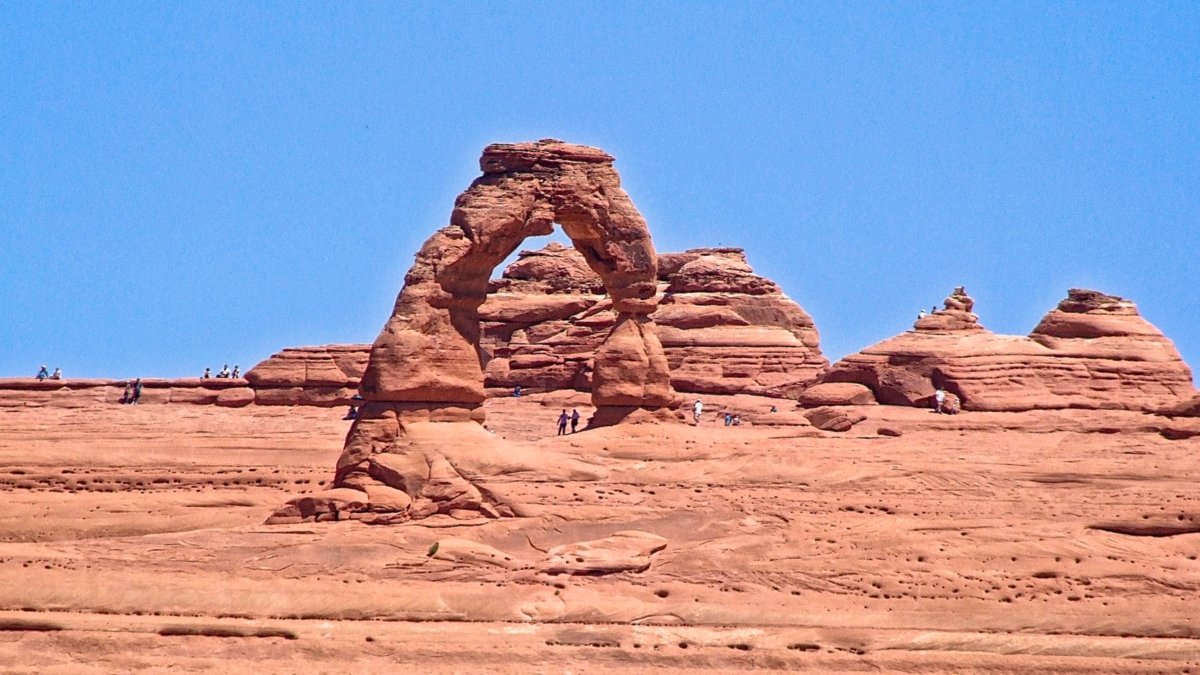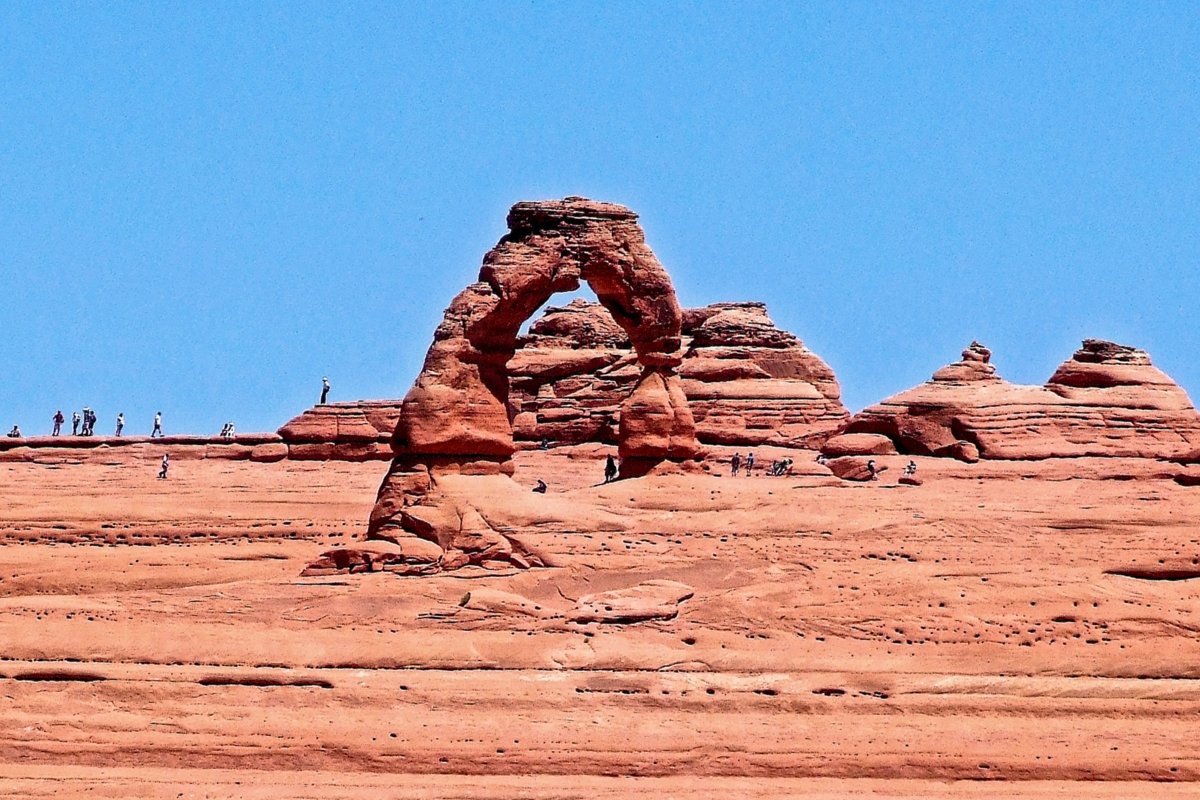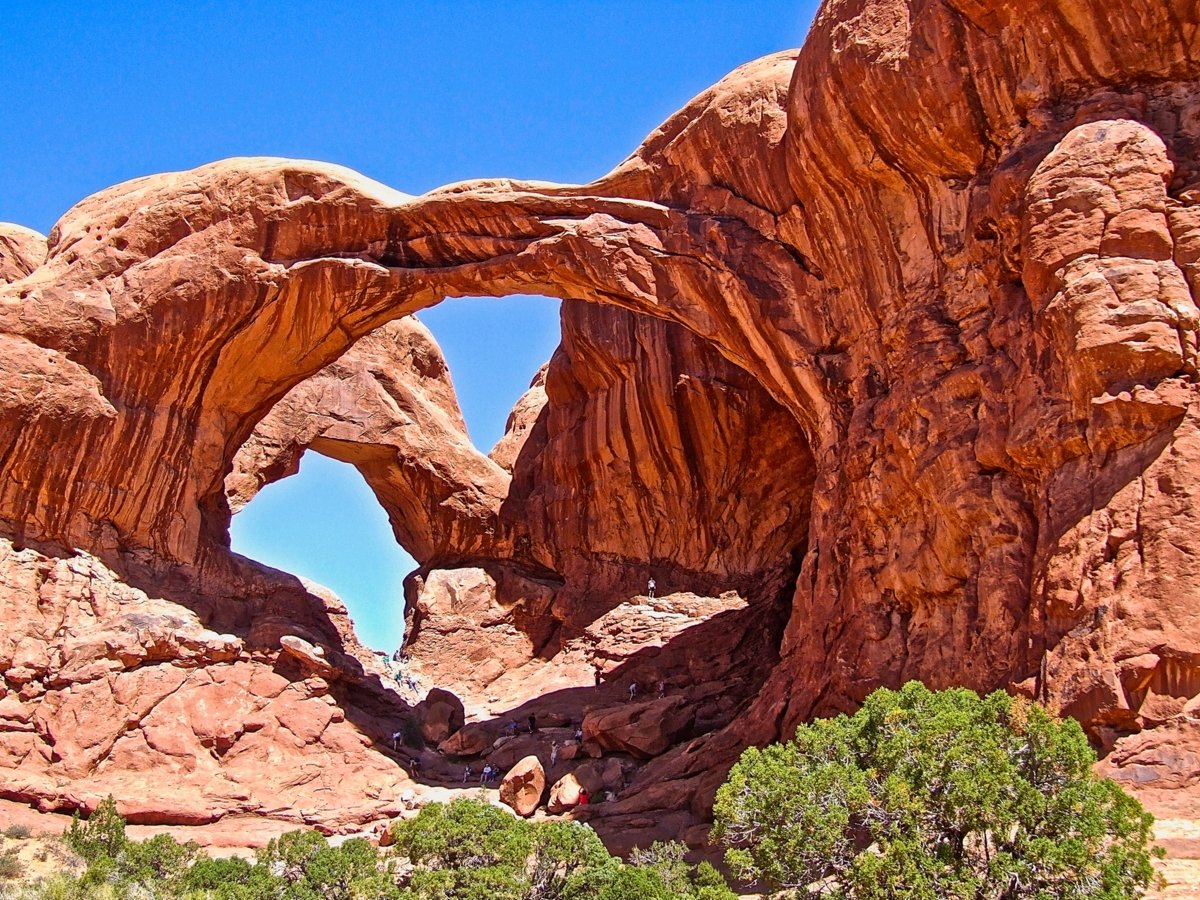
Arches National Park
The park contains natural stone arches, hundreds of soaring pinnacles, massive rock fins, and giant balanced rocks. Many changes and expansions have taken place at Arches since the park's initial establishment as a National Monument in 1929 by President Herbert Hoover. The boundaries have been expanded many times, and Arches National Park was dedicated as a national treasure once again in 1971. More than 2000 natural arches grace the park, with the largest being Landscape Arch and the most famous being Delicate Arch, which is a highly recognized symbol of the state of Utah that even appears on a postage stamp. Arches in the Salt Valley Wash area are plentiful and include Navajo Arch, Double O, Tunnel Arch, and Broken Arch. Delicate Arch is on the eastern side of the park near Wolfe Ranch.
The story of Arches begins roughly 65 million years ago. At that time, the area was a dry seabed spreading from horizon to horizon. If you stood in Devils Garden then, the striking red rock features we see today would have been buried thousands of feet below you, raw material as yet uncarved. Then the landscape slowly began to change.
First, geologic forces wrinkled and folded the buried sandstone, as if it were a giant rug and someone gathered two edges towards each other, making lumps across the middle called Anticlines. As the sandstone warped, fractures tore through it, establishing the patterns for rock sculptures of the future.
Next, the entire region began to rise, climbing from sea level to thousands of feet in elevation. What goes up must come down, and the forces of erosion carved layer after layer of rock away. Once exposed, deeply buried sandstone layers rebounded and expanded, like a sponge expands after it's squeezed (though not quite so quickly). This created even more fractures, each one a pathway for water to seep into the rock and further break it down.
Today, water shapes this environment more than any other force. Rain erodes the rock and carries sediment down washes and canyons to the Colorado River. Desert varnish appears where water cascades off cliffs. In winter, snowmelt pools in fractures and other cavities, then freezes and expands, breaking off chunks of sandstone. Small recesses develop and grow bigger with each storm. Little by little, this process turns fractured rock layers into fins, and fins into arches. Arches also emerge when potholes near cliff edges grow deeper and deeper until they wear through the cliff wall below them. In addition to grand arches, water dissolves small honeycomb formations called tafoni.
Over time, the same forces that created these arches will continue to widen them until they collapse. Standing next to a monolith like Delicate Arch, it's easy to forget that arches are far from permanent.

Arches N.P contains buttes and canyons as well as arched.



A shattered rock overhang.
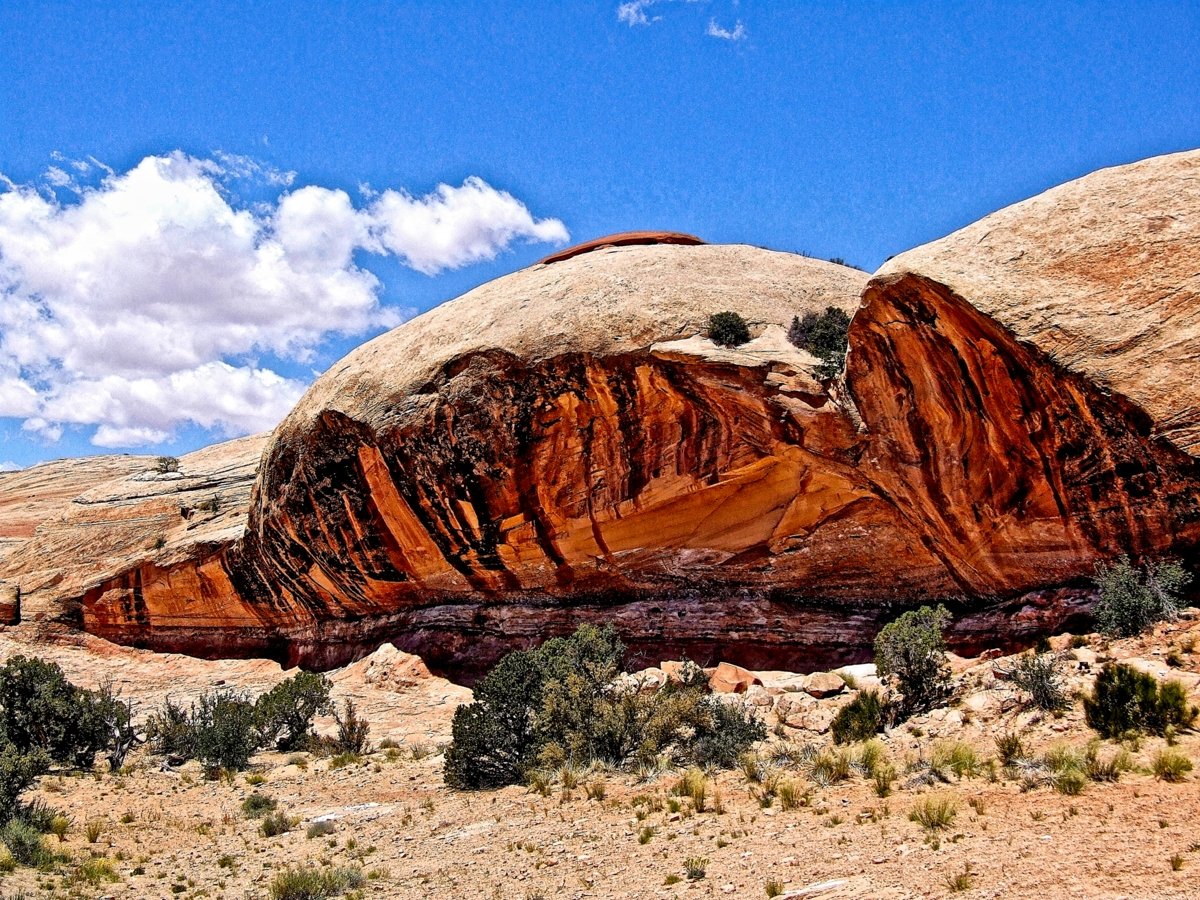
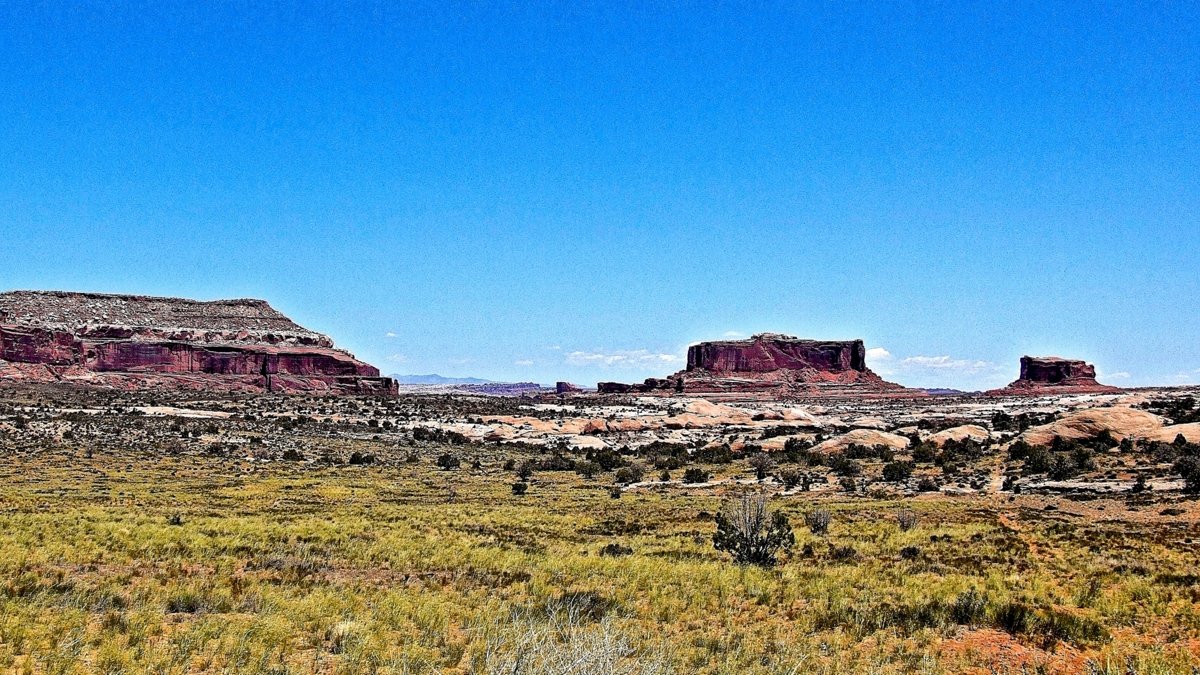
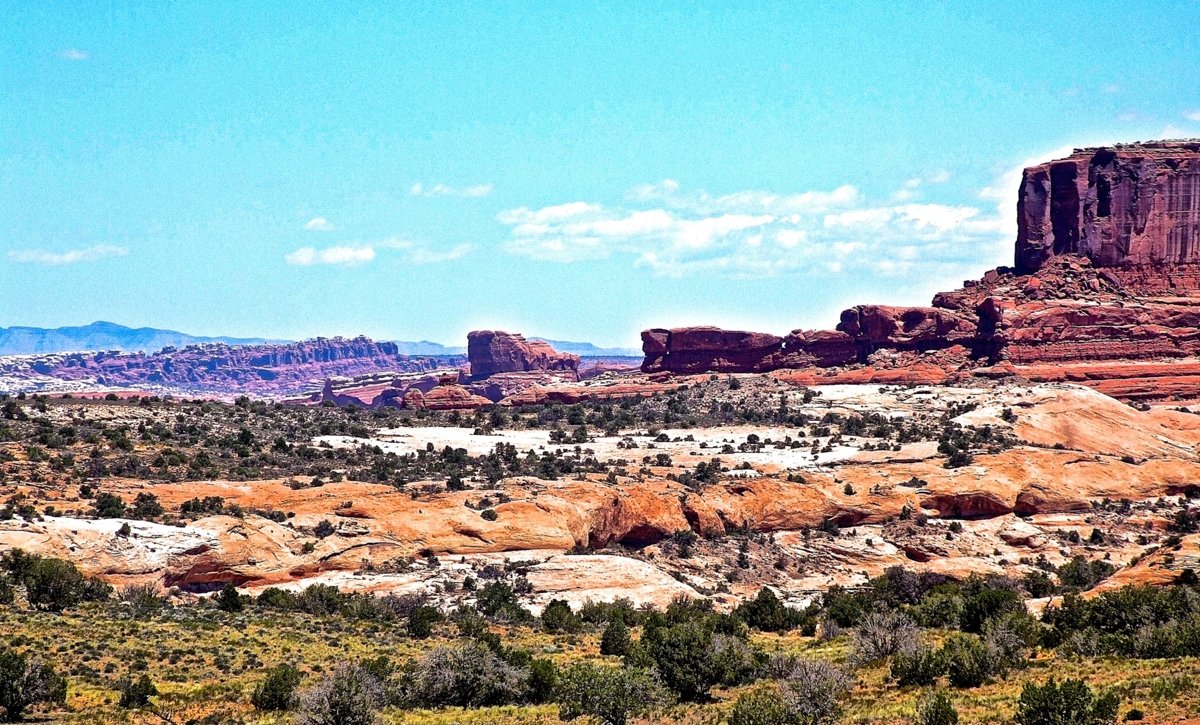
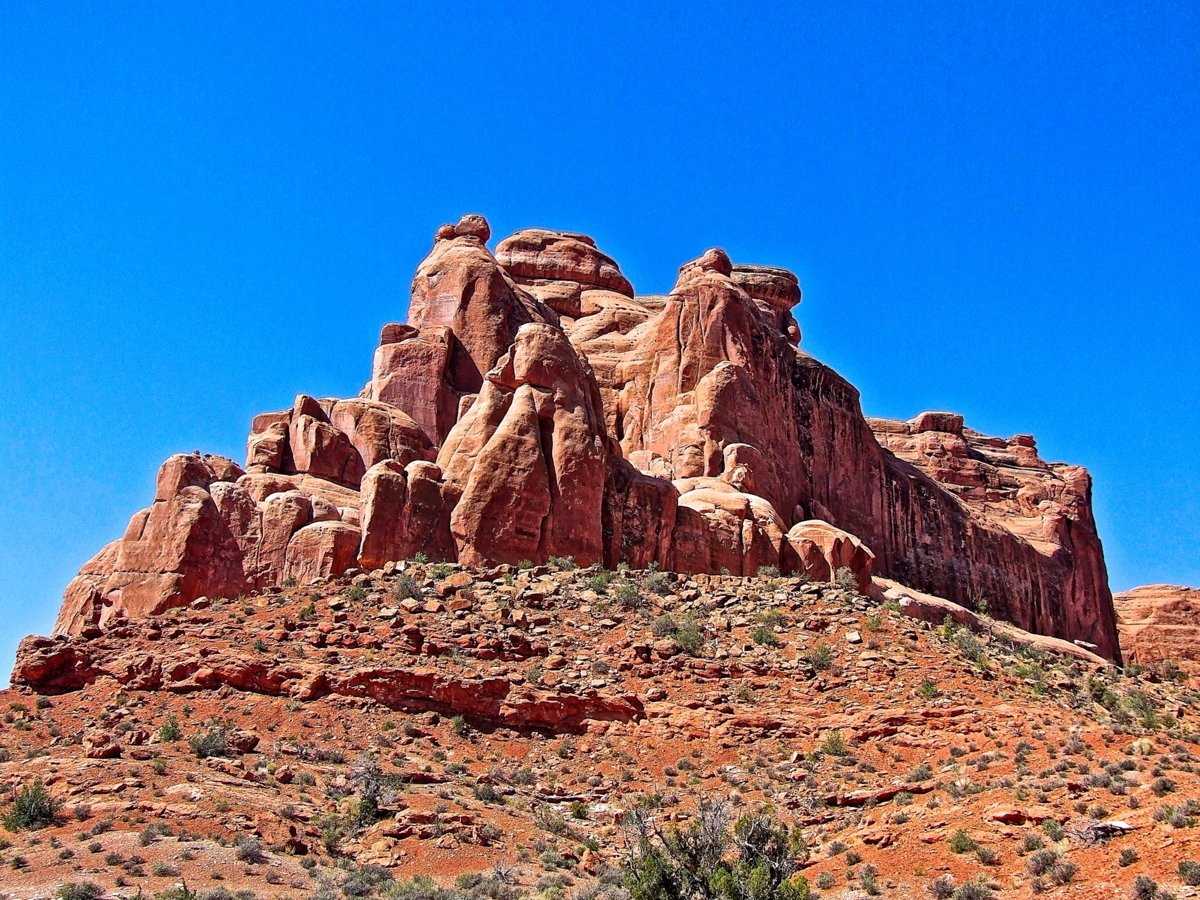
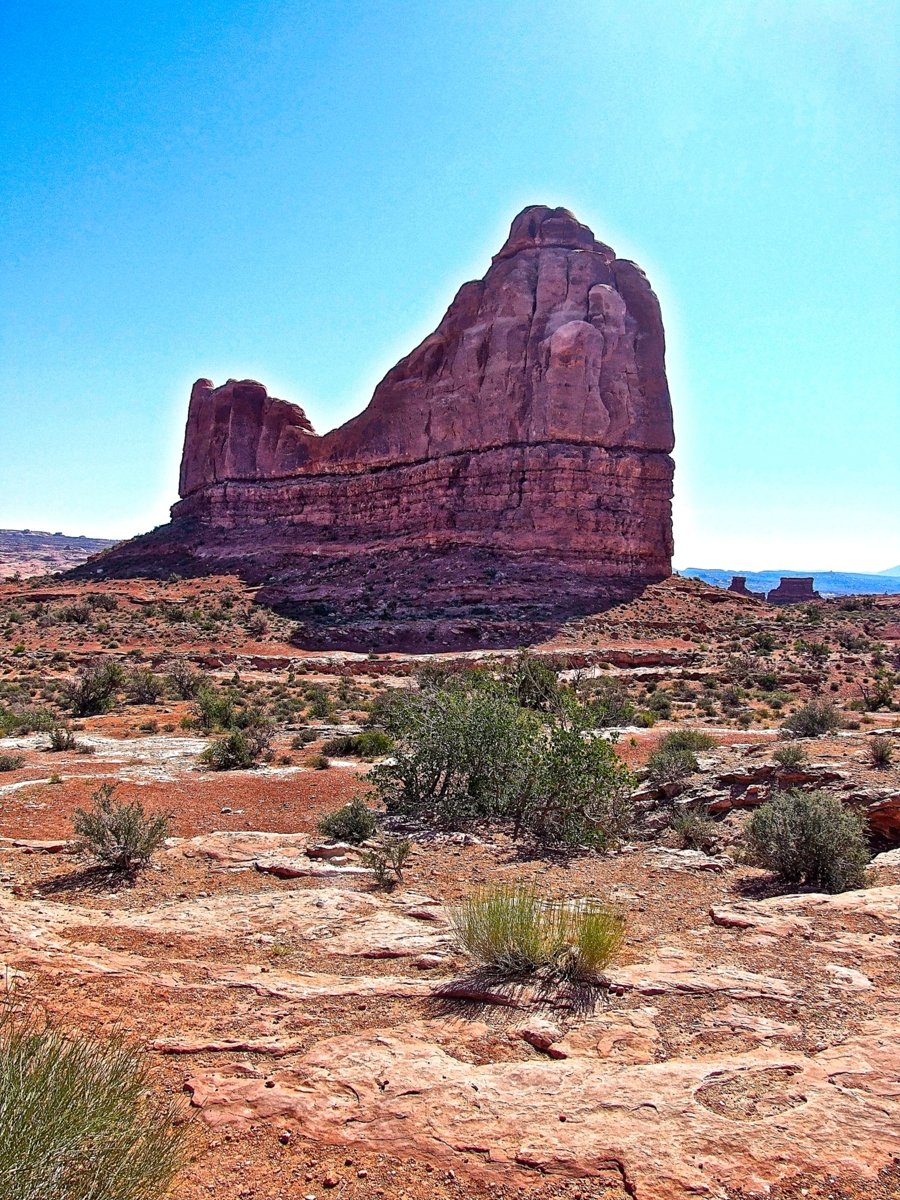
A large butte looking like a ship or iceberg
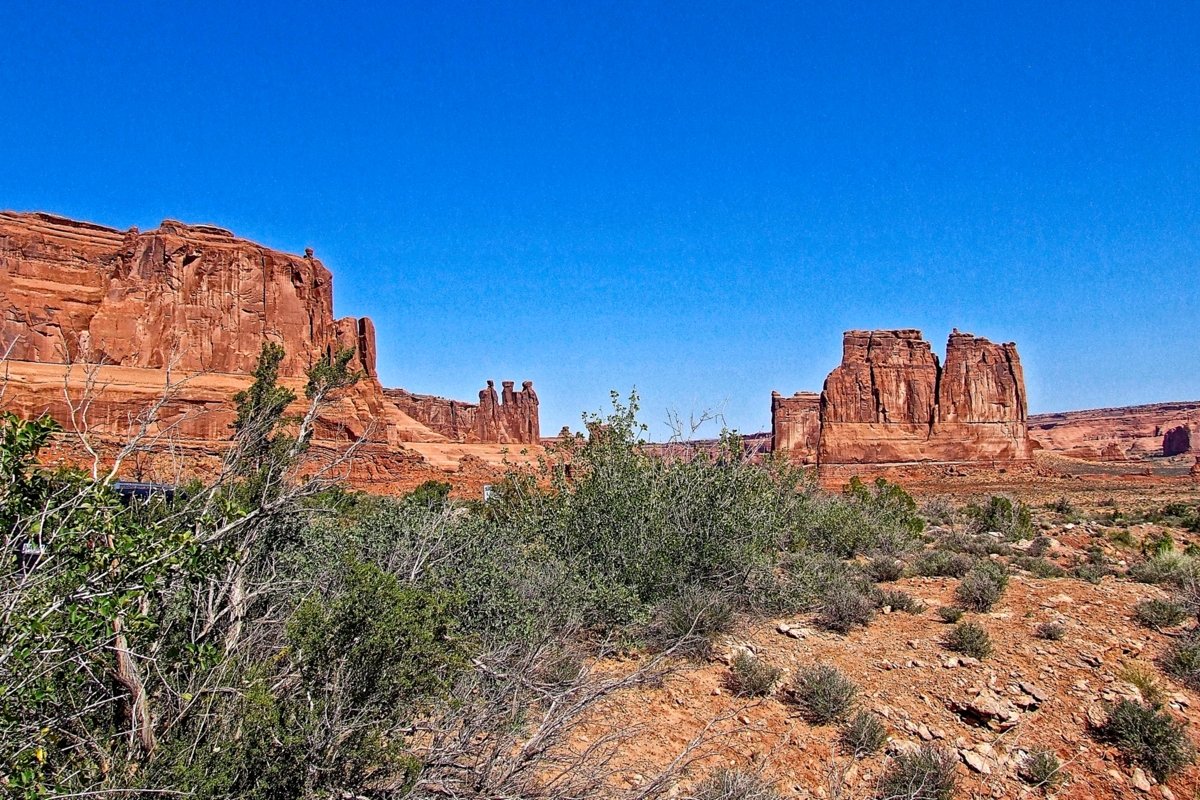
Pinnacles
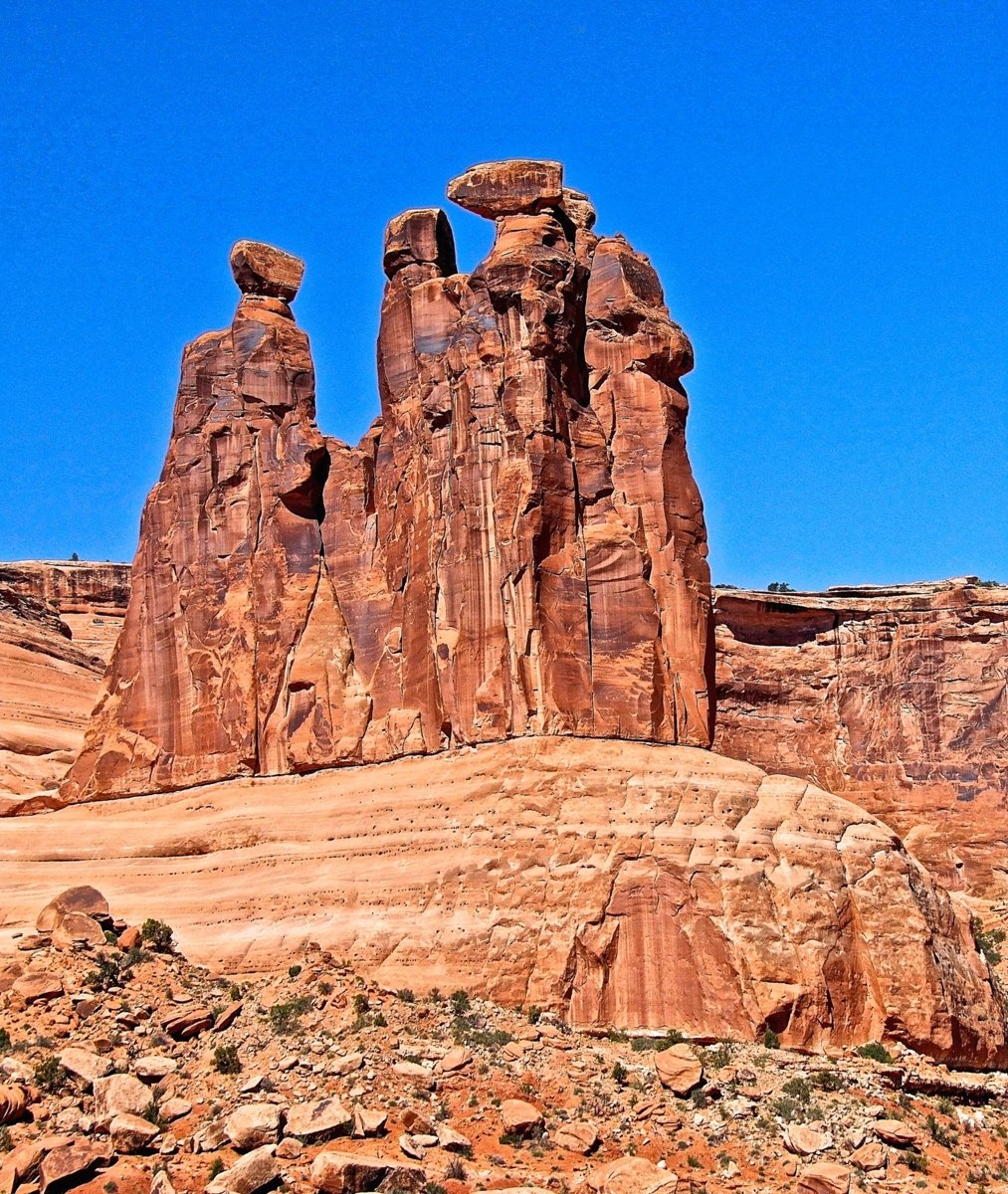
Pinnacles closer view

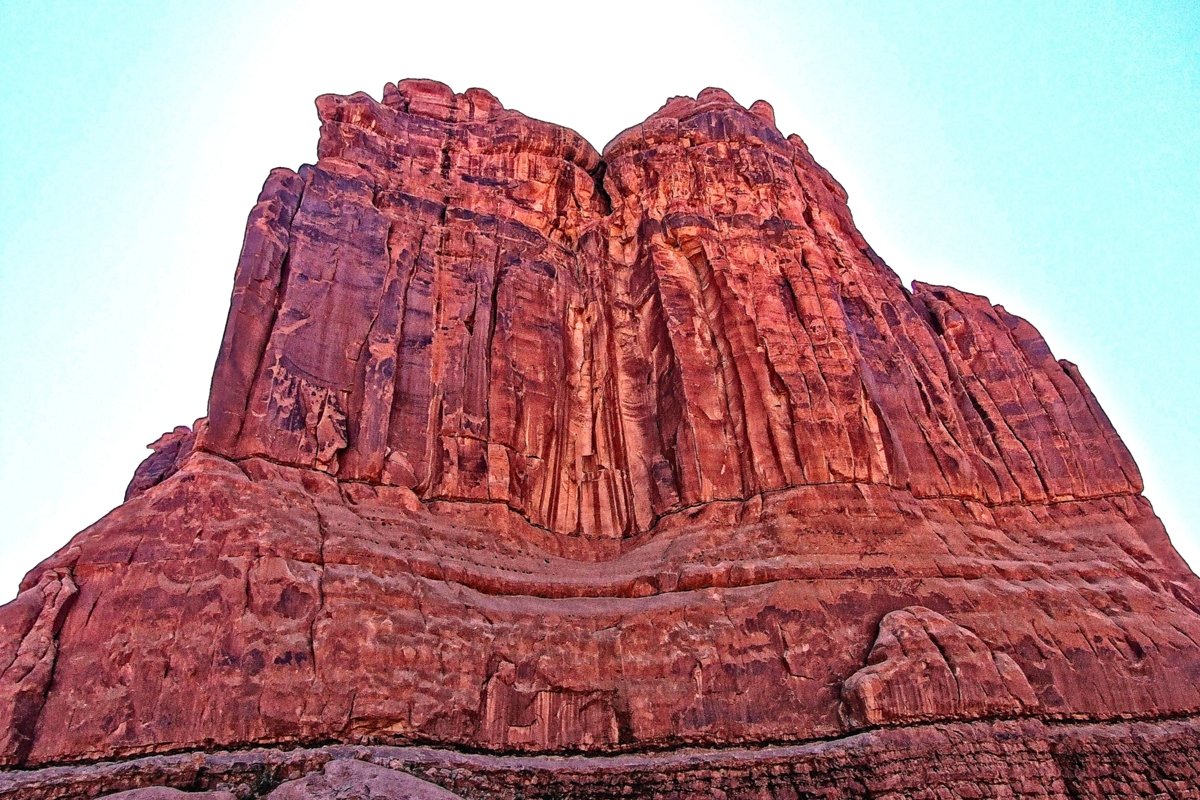
Striking colours
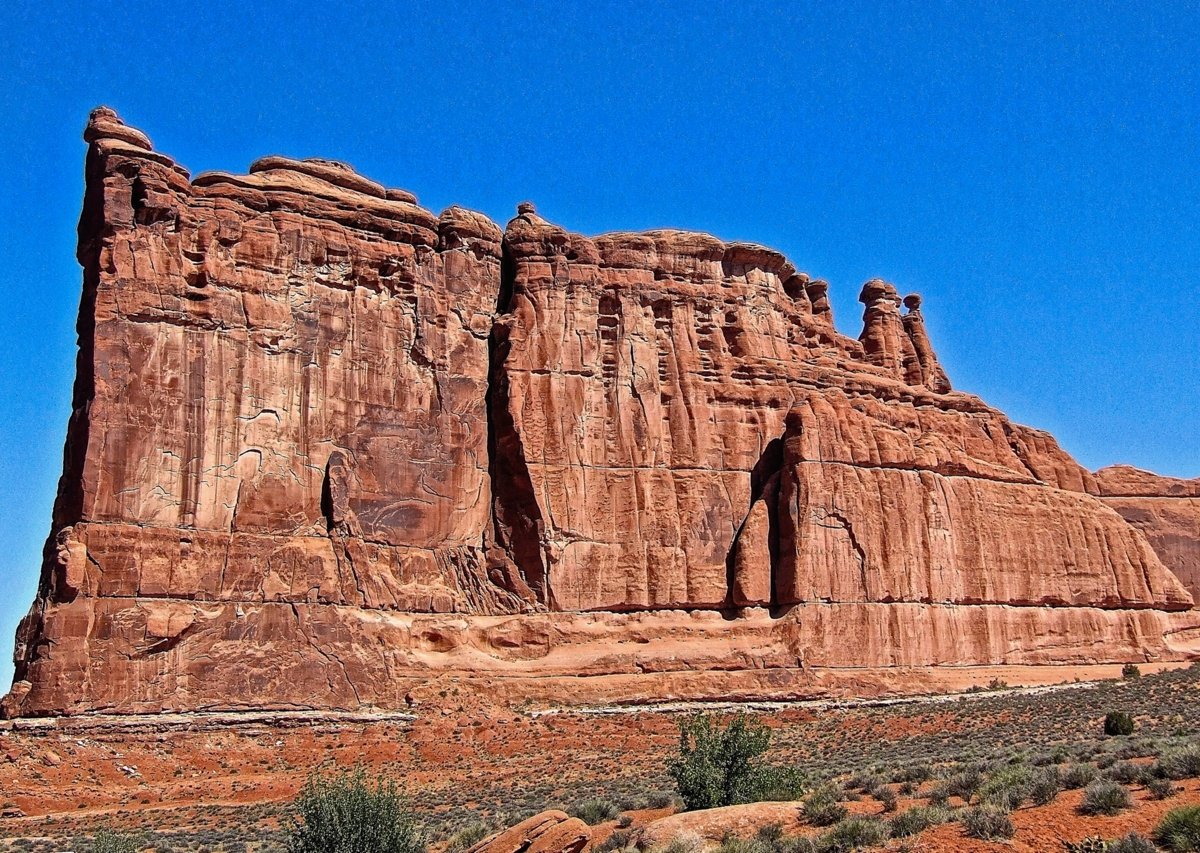

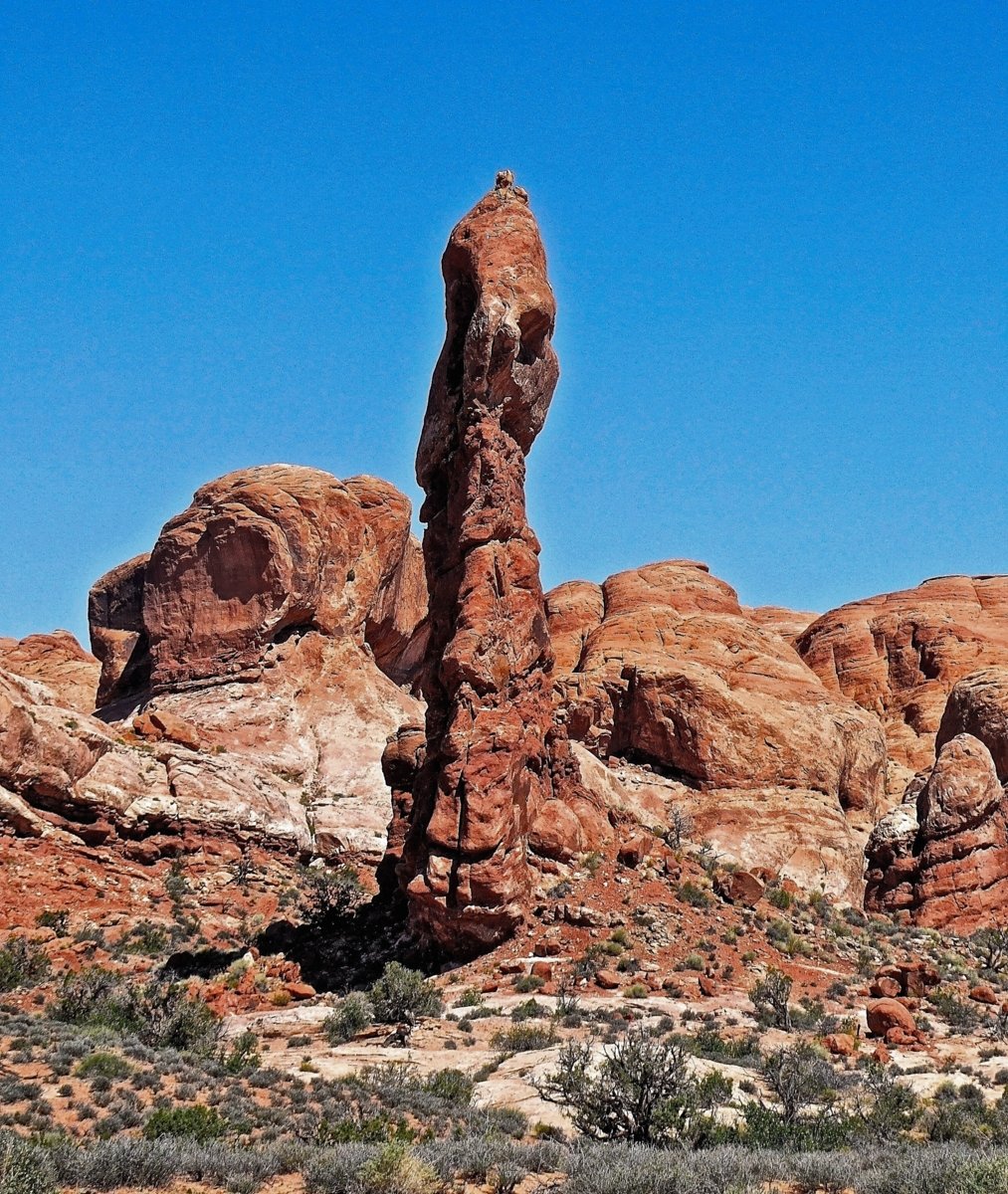
Slender pillar

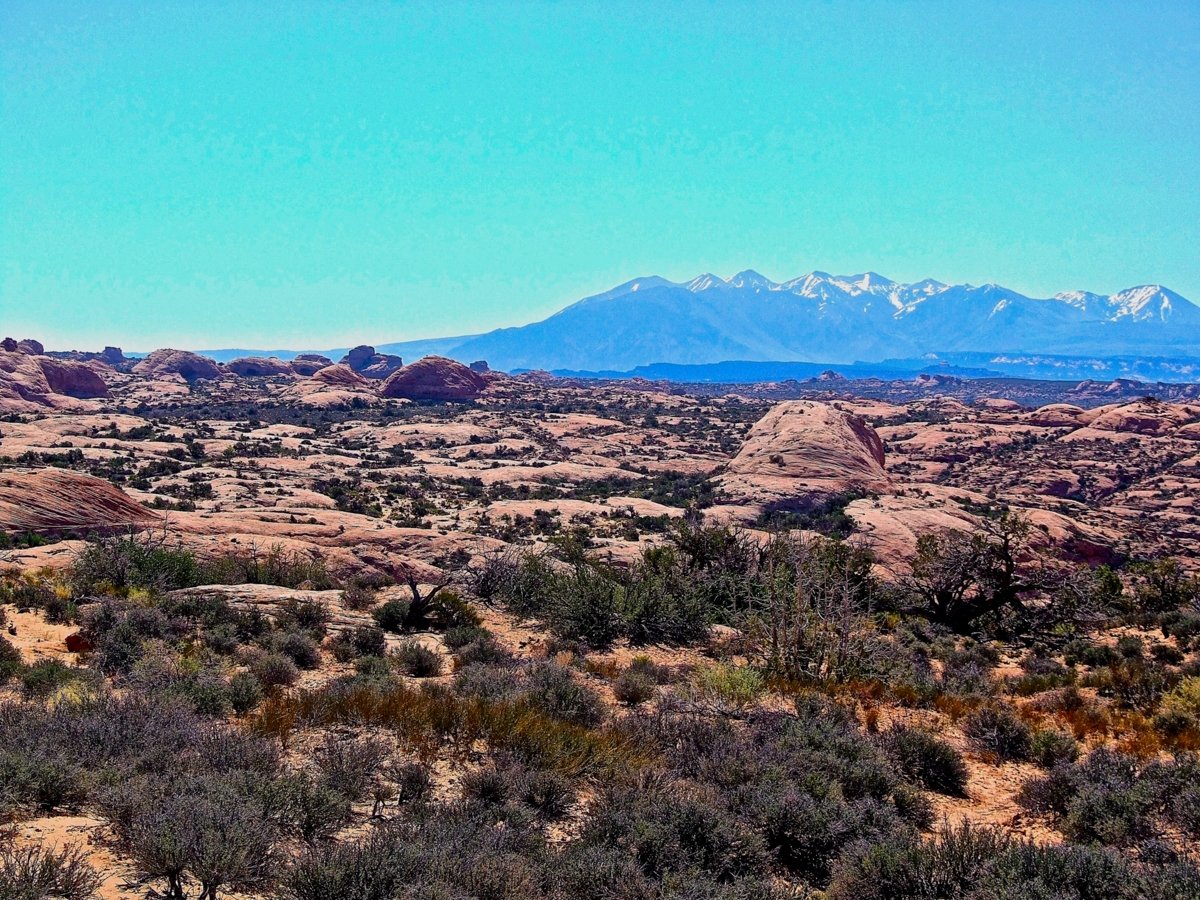
Snow on the distant mountains in June!
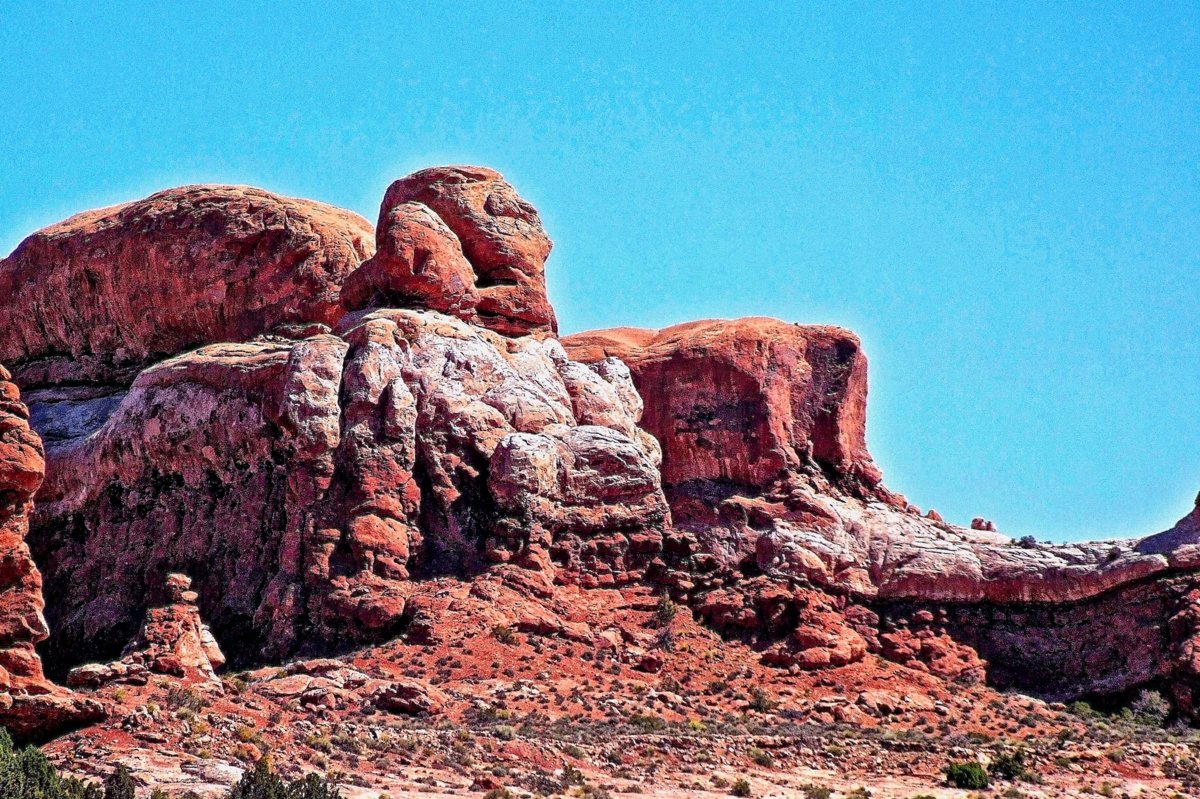
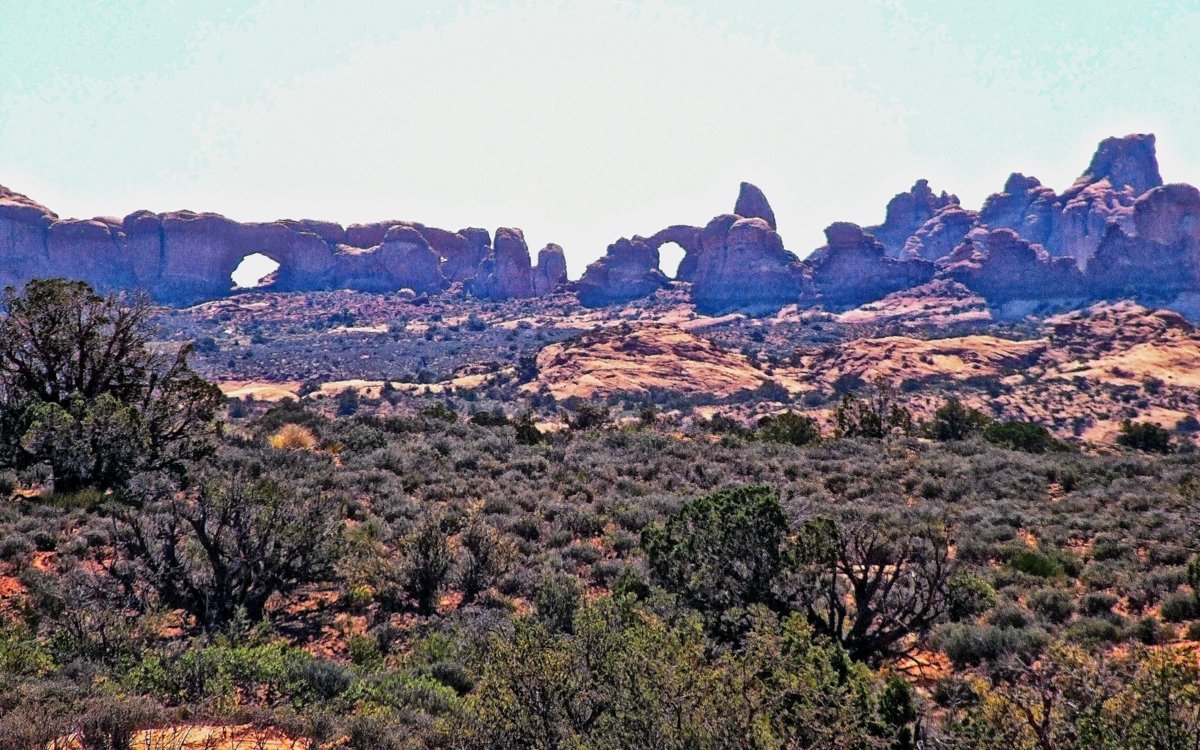
A first view of some arches

Striking rock formations

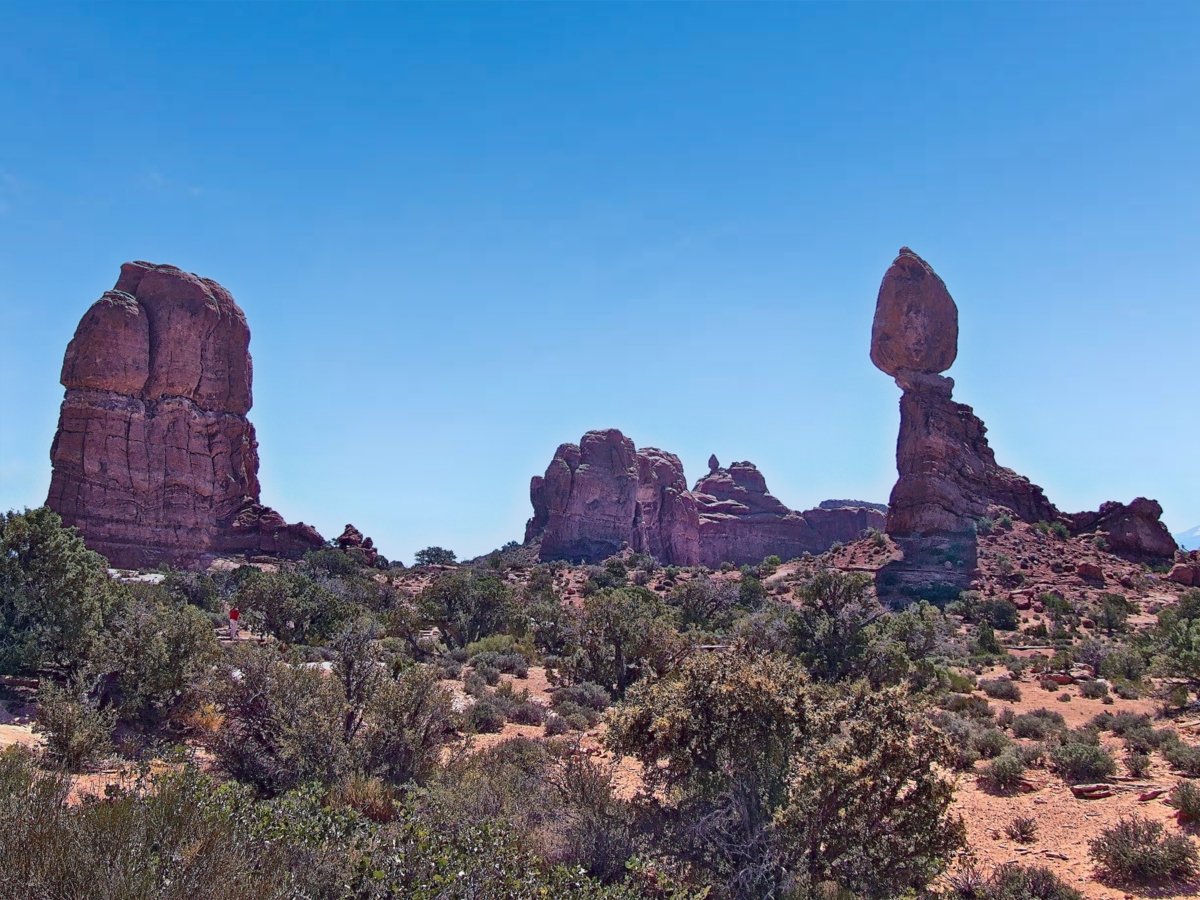
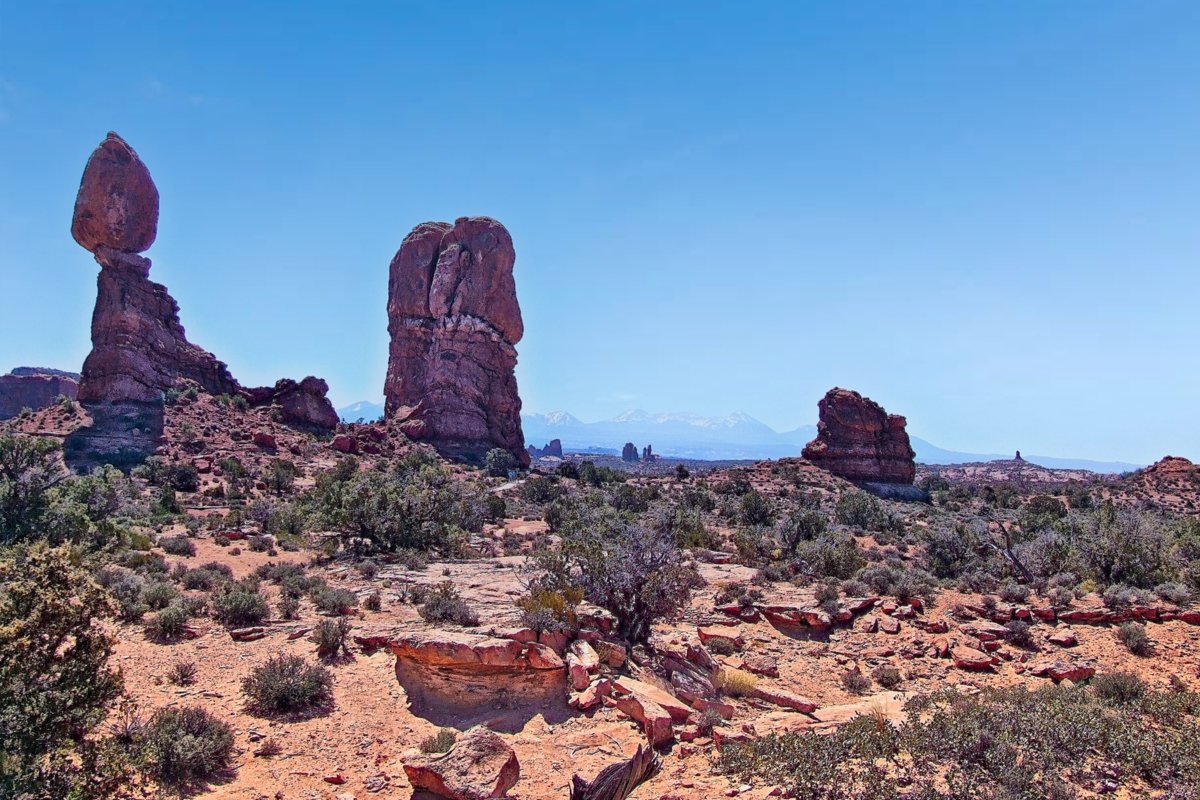

The figure below the arch gives some scale
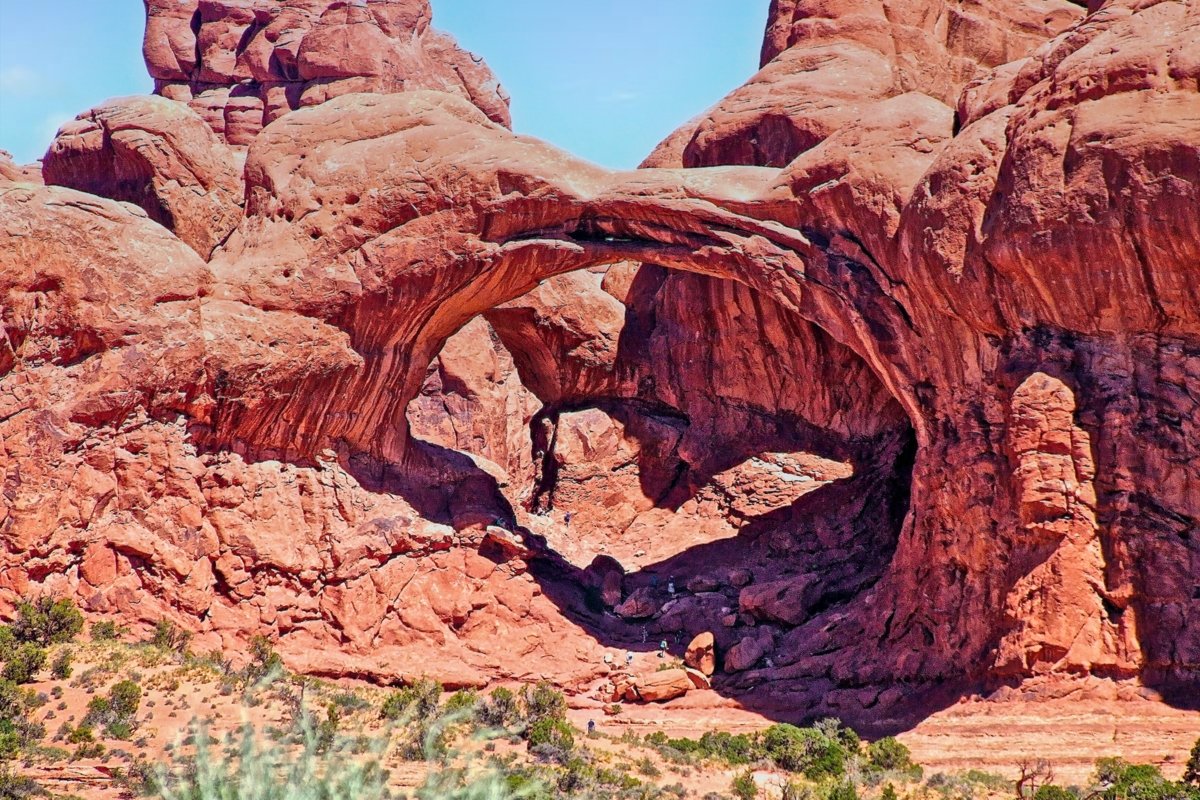
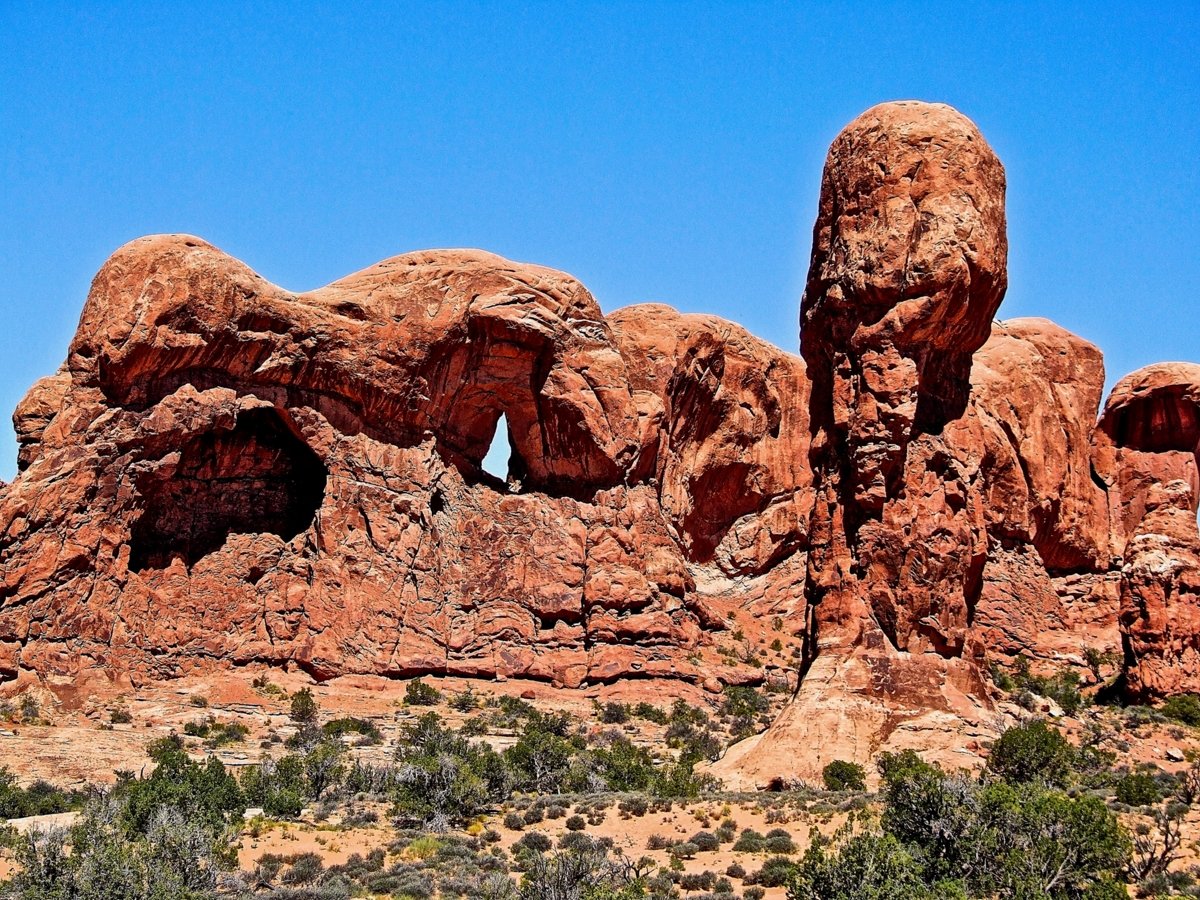
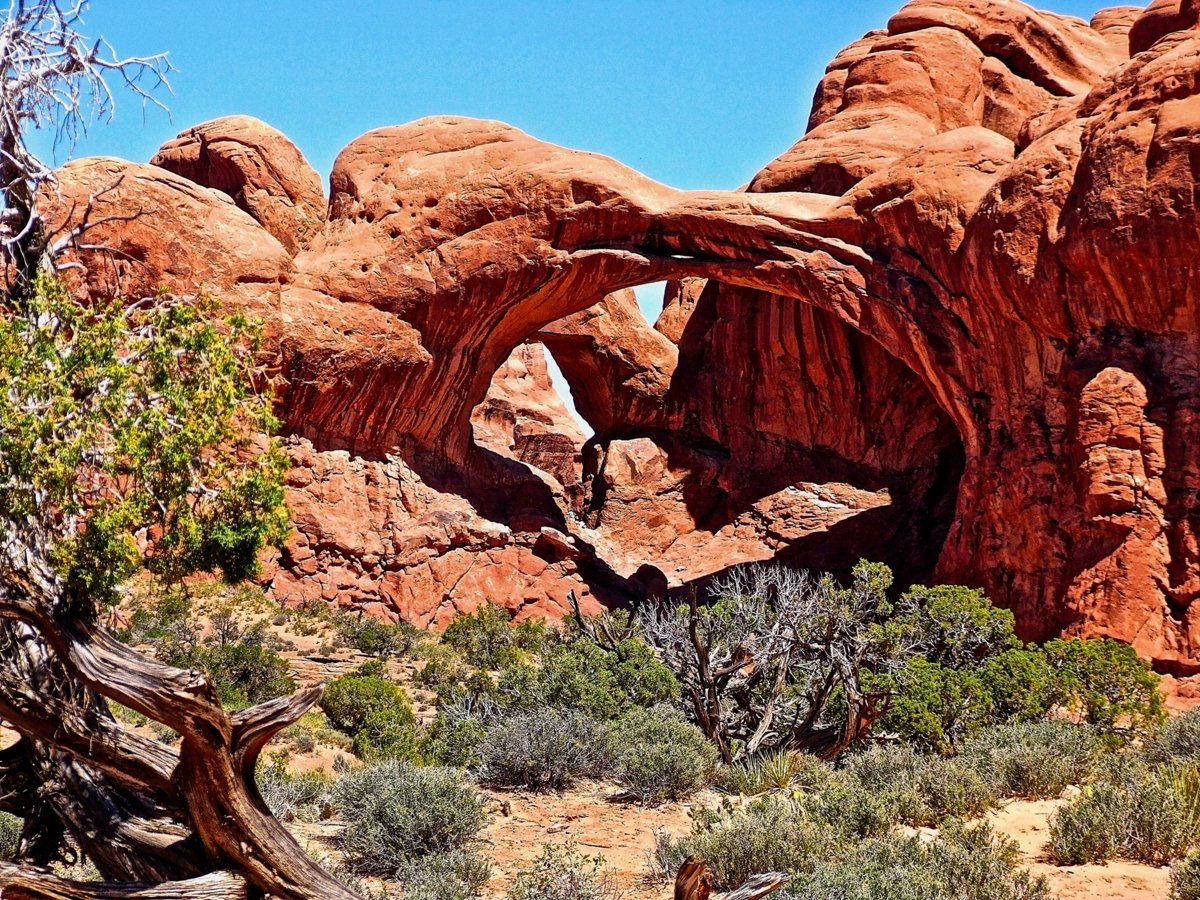

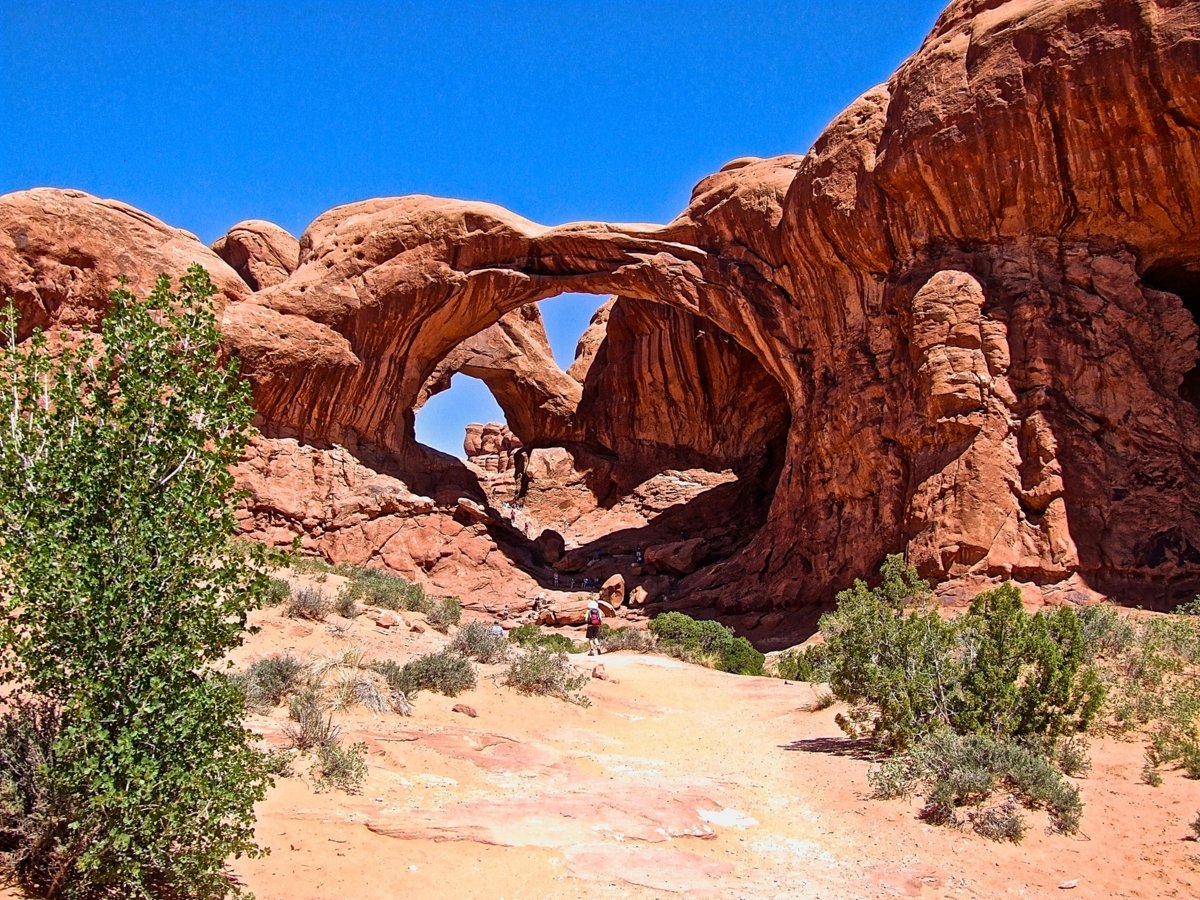
Double Arch

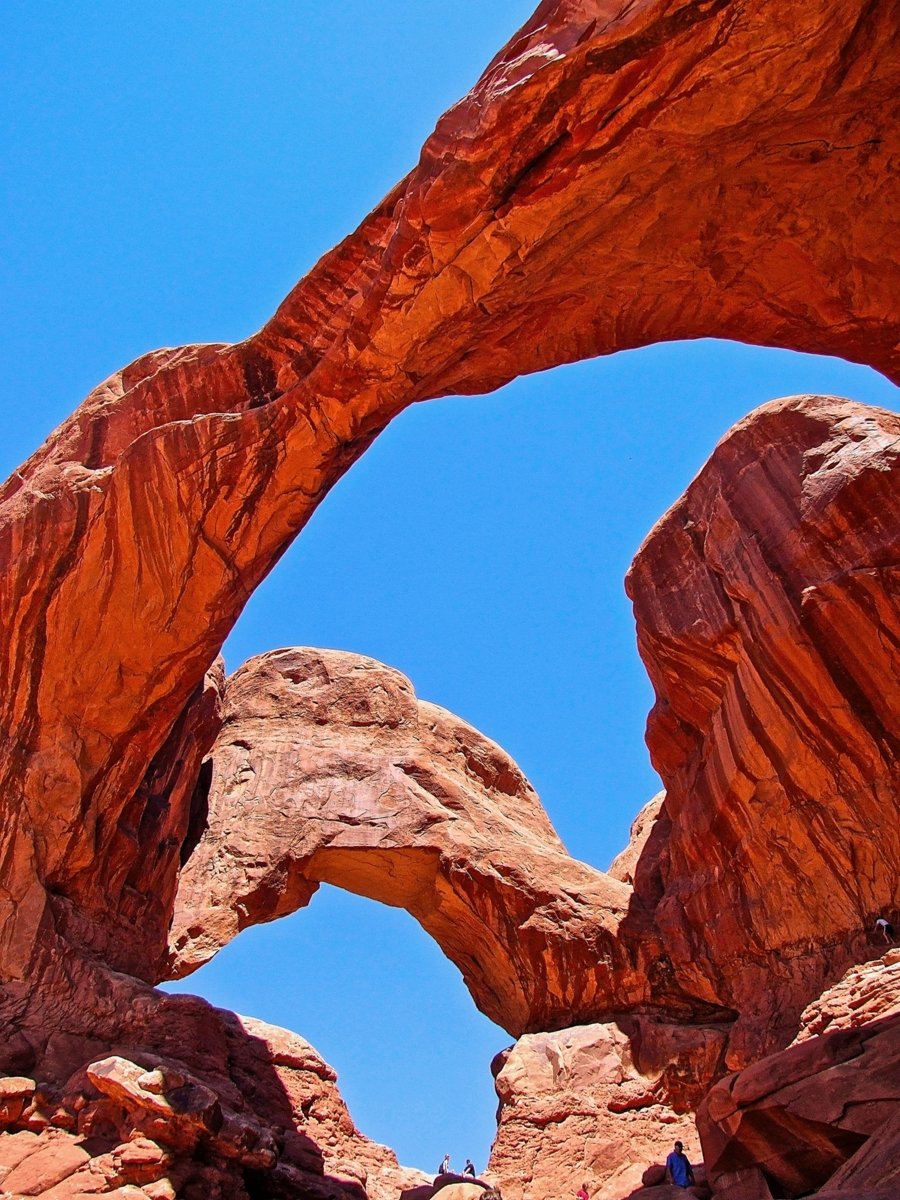
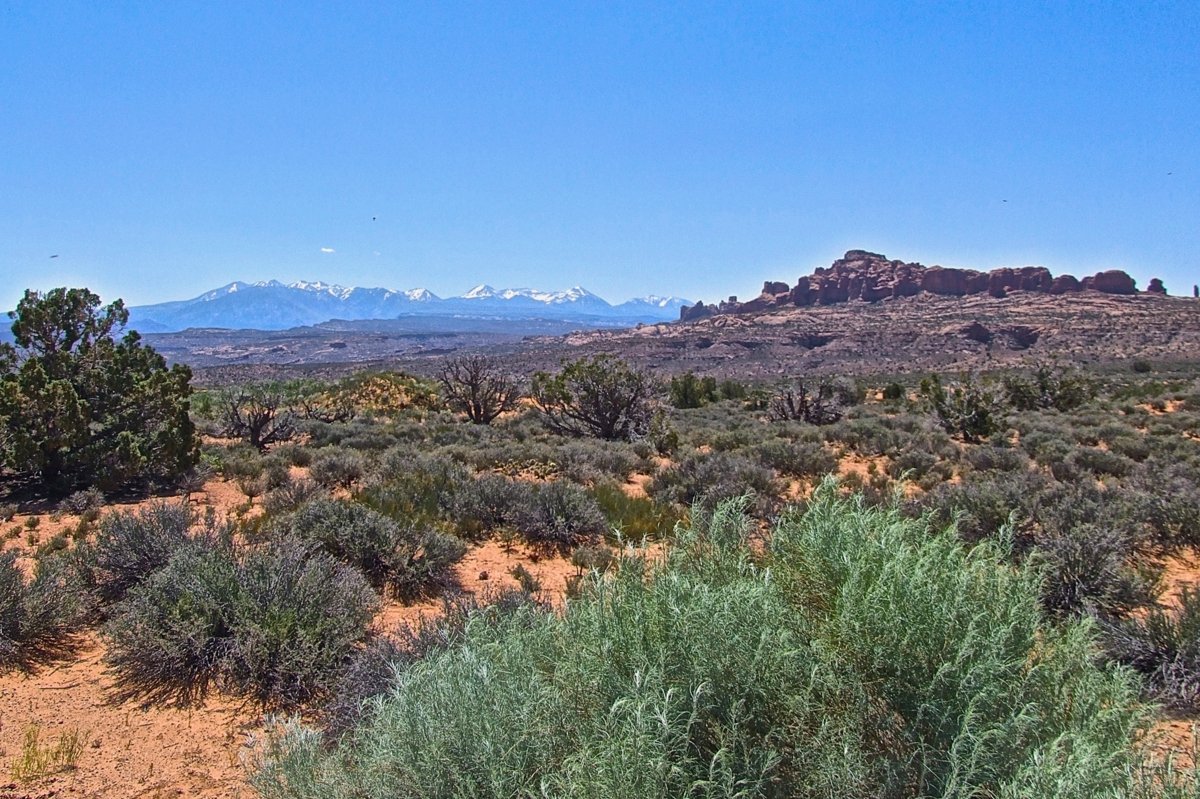
Deserts aren't all bare sand!

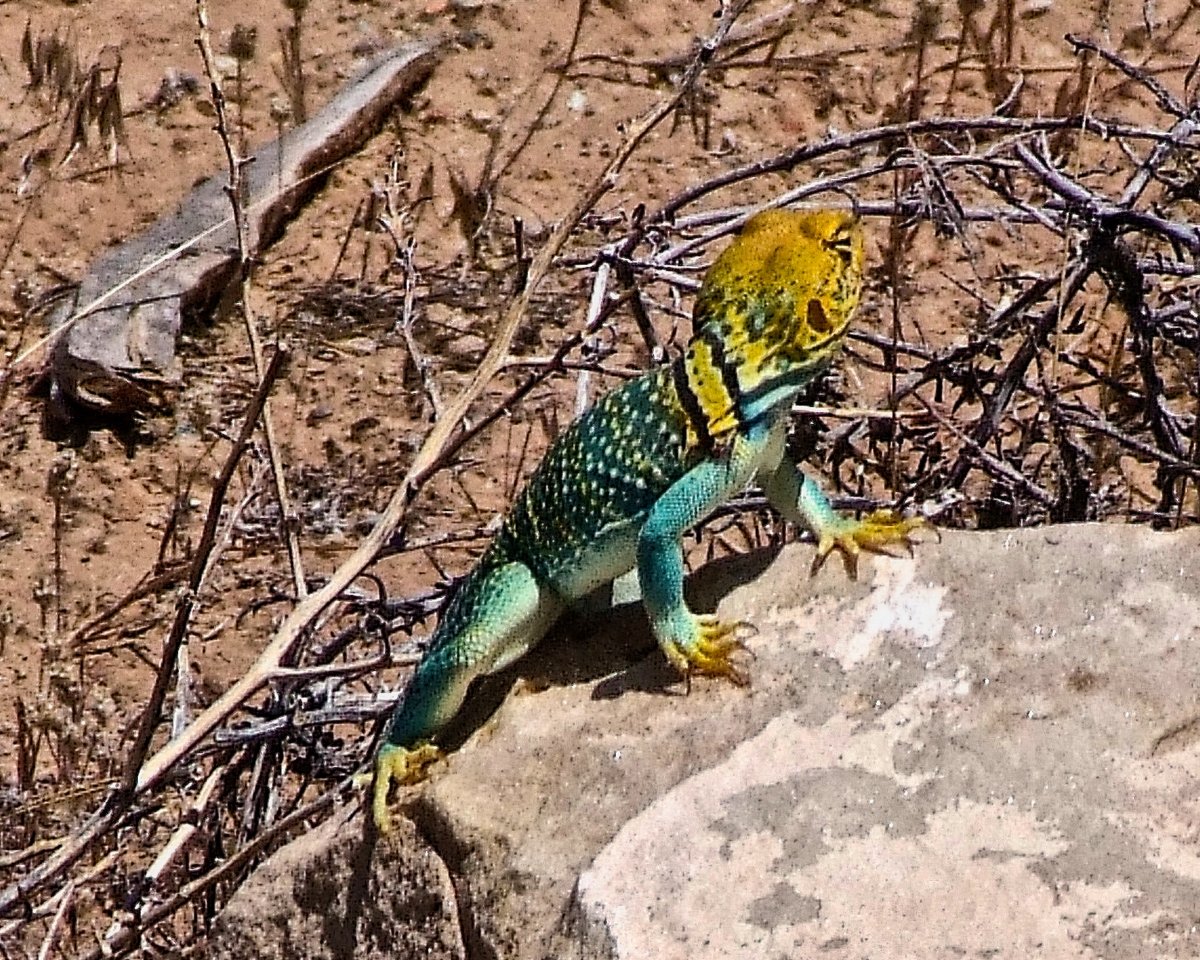
Common Collared Lizard
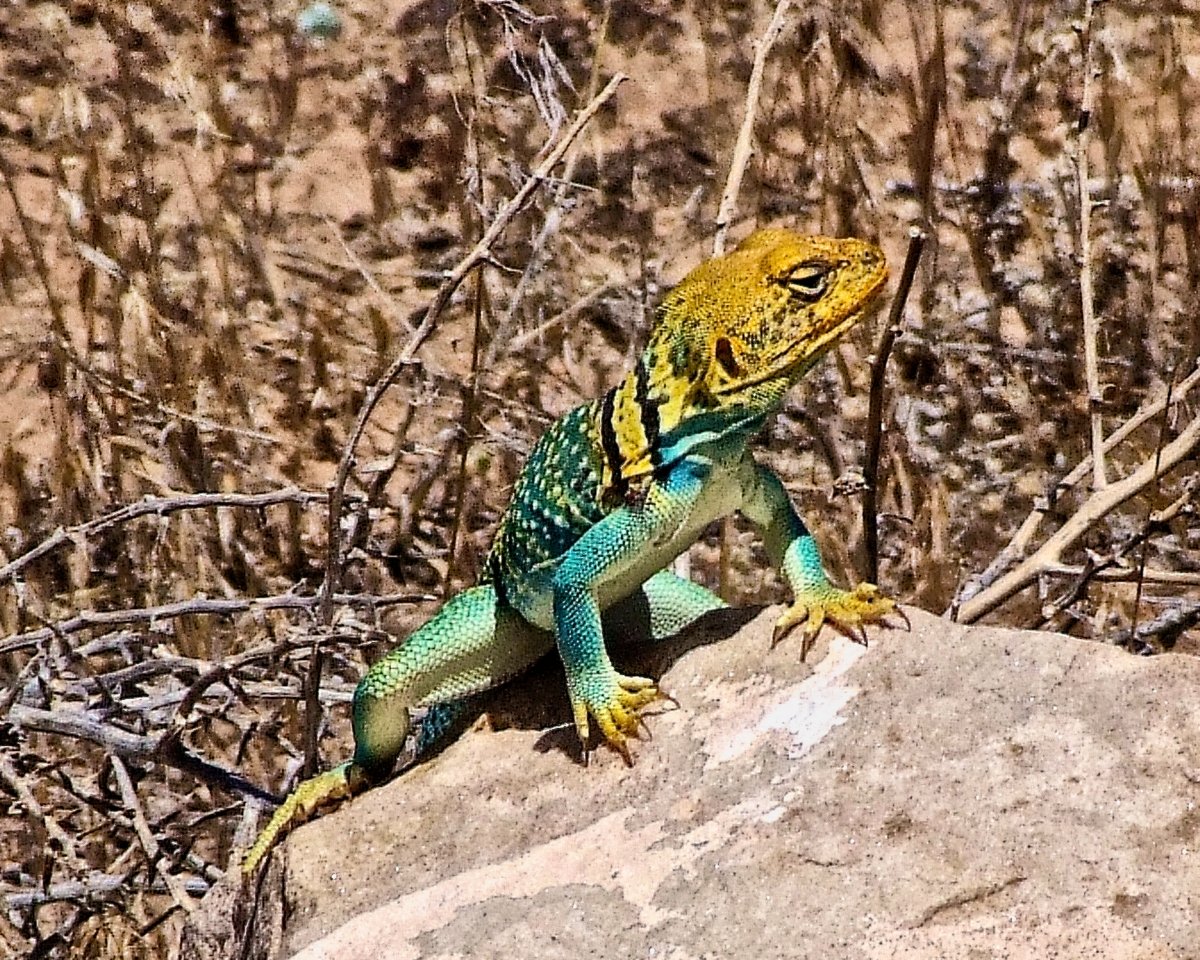

Delicate Arch in the distance
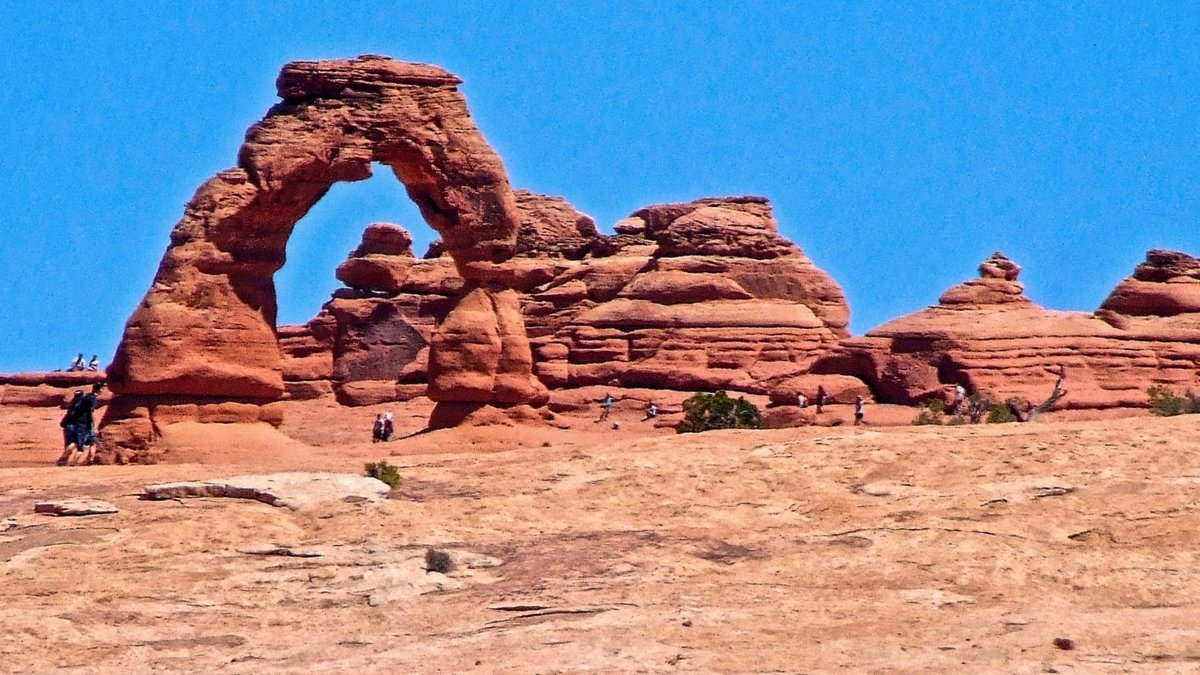
Distant view of Delicate Arch
